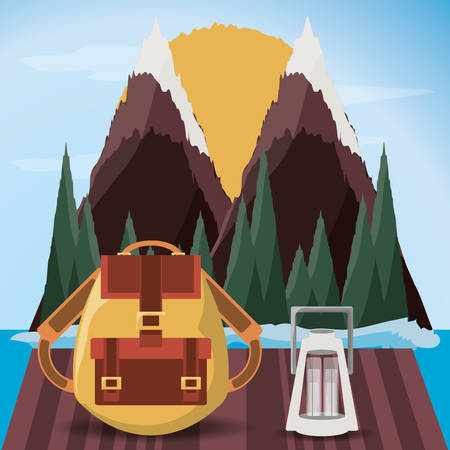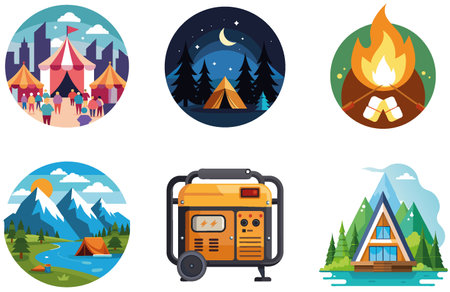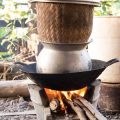Introduction: Backpacking vs. Car Camping Stoves
When it comes to outdoor cooking, choosing the right stove can make or break your adventure. Whether you’re trekking deep into the backcountry or rolling up to a scenic campground, the type of stove you pack matters more than you might think. Backpacking stoves are all about being lightweight and compact, perfect for folks who need to keep things minimal while covering lots of miles. On the other hand, car camping stoves can be bigger and heavier, offering more features and convenience since space isn’t as tight. Each type of adventure calls for a different approach, and picking the right stove ensures you’ll have hot meals without extra hassle. In this guide, we’ll dig into what sets these stoves apart and help you figure out which one best fits your style of exploring America’s great outdoors.
Key Differences Between Backpacking and Car Camping Stoves
When it comes to choosing between backpacking and car camping stoves, understanding their core differences can help you pick the right tool for your next adventure. Let’s break down the key features that set these stove types apart, focusing on weight, size, fuel options, and cooking capabilities.
Weight and Portability
If you’re hiking deep into the backcountry, every ounce counts. Backpacking stoves are built with minimalism in mind—they’re lightweight, compact, and often fit neatly inside a cook pot or side pocket. Car camping stoves, on the other hand, aren’t designed for long hauls. They tend to be bulkier and heavier because portability takes a backseat to comfort and performance when you have a vehicle to do the heavy lifting.
| Feature | Backpacking Stove | Car Camping Stove |
|---|---|---|
| Weight | 8-16 oz (227-454g) | 4-15 lbs (1.8-6.8kg) |
| Packed Size | Palm-sized | Shoebox-sized or larger |
Fuel Options
The type of fuel your stove uses can impact convenience, cost, and performance. Backpacking stoves typically run on small canisters of isobutane/propane blends or liquid fuel bottles—easy to carry but limited in capacity. Car camping stoves usually use larger propane tanks, which last longer and are easier to refill but aren’t practical for carrying over long distances.
| Stove Type | Common Fuels |
|---|---|
| Backpacking Stove | Isobutane/Propane Canisters, White Gas, Alcohol, Solid Fuel Tabs |
| Car Camping Stove | Large Propane Tanks (1 lb or 20 lb), Liquid Fuel Bottles |
Cooking Capability
This is where car camping stoves really shine. They often feature two burners, better flame control, and support for full-size pots and pans—perfect for making pancakes or grilling burgers at camp. Backpacking stoves prioritize efficiency and simplicity; they generally accommodate one small pot at a time and may not provide fine-tuned simmer control.
| Stove Type | Burners | Simmer Control | Pot Support Size |
|---|---|---|---|
| Backpacking Stove | Single Burner | Limited/Basic | Small Pot Only |
| Car Camping Stove | Duel Burners Common | Good/Excellent | Large Pots & Pans Supported |
The Bottom Line: Choose Based on Your Trip Goals
If you need to travel light and cover miles, backpacking stoves are engineered for mobility. If mealtime is a highlight of your outdoor experience and you want more cooking flexibility, car camping stoves offer comfort and versatility—just remember you’ll need a vehicle to get them to camp.

3. Backpacking Stove Essentials
When it comes to backpacking stoves, every ounce and inch matters. Thru-hikers and ultralight backpackers are especially picky about their cooking gear, so the stoves favored by these communities are often compact, lightweight, and fuel-efficient. Here’s what you should keep in mind when choosing a stove for backpacking adventures:
Weight and Packability
Your stove needs to fit easily in your pack and not tip the scale. Most popular backpacking stoves weigh under a pound (some just a few ounces), and many fold up small enough to tuck into a mug or pot. If you’re planning long miles, saving space and weight is critical.
Fuel Types
The most common backpacking stove fuels are canister fuel (isobutane/propane blends), liquid fuel (like white gas), alcohol, and solid fuel tablets. Canister stoves are the most user-friendly and efficient for most hikers, while alcohol stoves are a favorite among ultralighters for their simplicity and minimal weight.
Popular Stove Styles
- Canister Stoves: These screw directly onto fuel canisters, light quickly, and offer good simmer control. They’re reliable for three-season use and ideal for solo or duo trips.
- Alcohol Stoves: Loved by thru-hikers for being ultralight, cheap, and nearly foolproof. However, they have slower boil times and can be less effective in wind or cold temperatures.
- Solid Fuel Stoves: Super basic—just add a tablet and light it. They’re compact but slow, with limited heat output.
Simplicity vs. Features
Some backpackers want just the basics: boil water fast with no fuss. Others may want simmer control or integrated wind screens for more versatile camp cooking. Consider your priorities—if you mostly eat freeze-dried meals, a simple burner might be all you need.
Durability & Reliability
Backpacking means putting your gear through tough conditions. Go with stoves that have a proven track record on long trails like the Pacific Crest Trail or Appalachian Trail. Look for robust build quality, easy maintenance, and brands known for supporting their products in the U.S.
Bottom line: For backpacking, choose a stove that balances weight, efficiency, ease of use, and reliability to suit your trip style—whether you’re out for a weekend or trekking thousands of miles coast-to-coast.
4. Car Camping Stove Features
When it comes to car camping stoves, the features you’ll want are quite different from what’s needed for backpacking. Since you’re not as limited by weight or space, you can opt for stoves that offer more power and versatility. Here are some crucial aspects to consider:
Burner Power
Car camping stoves usually come with higher BTU (British Thermal Unit) ratings, meaning they can boil water faster and handle a wider range of cooking tasks. If you plan to cook real meals—think bacon and eggs in the morning or a stir fry at night—burner power is your friend.
Cooking Surface Size
A big advantage of car camping stoves is the larger cooking surface. This allows you to use bigger pots and pans or even cook multiple items at once. Here’s a quick comparison:
| Backpacking Stove | Car Camping Stove | |
|---|---|---|
| Average Burner(s) | 1 small burner | 2+ large burners |
| Pot/Pan Size | 1-2 qt max | Up to 12″ skillet or griddle |
| Total Cooking Area | Tight & compact | Spacious, often with wind protection |
Group Cooking Needs
If youre camping with family or friends, car camping stoves make group cooking a breeze. Multiple burners mean you can prepare coffee while scrambling eggs, or boil pasta while simmering sauce. Some models even have griddles or grill attachments for more variety.
Key Takeaways for Car Camping Stoves:
- Bigger and Heavier: Not ideal for hiking, but perfect if your car is nearby.
- Higher Capacity: Designed for full meals and groups.
- Greater Versatility: Can handle everything from pancakes to chili.
- Easier Cleanup: Removable drip trays and sturdy construction help keep messes in check.
If your adventure centers around good food and socializing at camp, investing in a quality car camping stove will pay off every time you hit the road.
5. Fuel Types and Availability
When choosing between backpacking and car camping stoves, understanding fuel types and their availability is crucial for planning any outdoor adventure in the U.S. Different stoves are designed to work best with specific fuels, each with its own pros, cons, and logistical considerations.
Canister Gas (Isobutane/Propane Mix)
For many backpackers and casual campers, canister gas is the go-to option. These small, pre-pressurized canisters are lightweight, easy to use, and widely compatible with most compact backpacking stoves. Canister gas burns cleanly, offers good temperature control, and is simple to attach or detach. You’ll find these canisters at most outdoor retailers like REI, Walmart’s camping section, and even some grocery stores near popular hiking areas. However, empty canisters need to be packed out and disposed of responsibly.
Liquid Fuel (White Gas/Coleman Fuel)
Liquid fuel stoves are a favorite among serious backpackers venturing into remote areas or cold climates. White gas (sometimes called Coleman fuel) delivers reliable performance in freezing temps where canister gas might fail. The downside is that these stoves often require more setup and maintenance—priming the stove, carrying a separate fuel bottle, and cleaning parts regularly. White gas is available at major outdoor outfitters and hardware stores across the U.S., but it may be harder to find in smaller towns or trailheads.
Propane
Car campers tend to prefer propane for its convenience and power. Propane typically comes in larger 16-ounce green cylinders that work well with full-size camp stoves or portable grills. Propane burns hot, works in all seasons, and is easily found at big-box stores like Home Depot, Walmart, sporting goods shops, and most gas stations nationwide. The tradeoff: propane cylinders are bulky and heavy—not practical for backpacking but perfect when you have a vehicle.
Other Options
Some backpacking stoves run on alcohol or solid fuel tablets for ultralight setups; these fuels are more niche but may be found at specialty outdoor shops. Wood-burning stoves offer unlimited fuel if you’re camping where collecting twigs is allowed—but check local fire regulations first.
Pro Tip: Plan Ahead
Always consider your route and local availability when picking a stove type. Popular trail towns near national parks usually stock canister gas and white gas year-round; remote regions may require advance supply planning or alternative solutions.
6. Safety, Maintenance, and Environmental Impact
Tips for Safe Use
Whether you’re backpacking or car camping, safety should always come first when using stoves. Always set up your stove on a stable, flat surface away from dry grass, overhanging branches, or tent walls to reduce fire risk. Never use stoves inside tents or enclosed spaces—carbon monoxide buildup is a real danger. Keep a safe distance between your stove and fuel canisters, and never leave an active stove unattended. Before heading out, familiarize yourself with your stove’s operation and bring extra matches or a lighter just in case.
Cleanup and Stove Maintenance
Proper maintenance keeps your stove reliable and safe. After each trip, clean off food spills and dirt to prevent clogs or corrosion. For liquid-fuel stoves (common in backpacking), check O-rings and seals regularly for wear. Canister stoves (popular for both styles) need little maintenance but should be stored dry to avoid rust. Always pack out empty fuel canisters and dispose of them at designated collection points—never toss them in the campfire or regular trash.
Minimizing Environmental Footprint
Leave No Trace principles are key at U.S. campsites. Use existing fire rings or cooking areas when possible, and don’t create new scars on the landscape. Avoid dumping dishwater near water sources—strain out food scraps and scatter gray water far from streams or lakes. Stick with biodegradable soaps if needed, but use them sparingly. When cleaning up after meals, pack out all food waste and trash; wildlife can become dependent on human food, which is harmful to both animals and campers alike.
U.S. Campsite Etiquette
Respecting fellow campers is part of good outdoor stewardship. Cook only in designated spots to avoid crowding shared spaces like picnic tables or shelters. Keep noise down during early mornings or late evenings—sound travels far in quiet campgrounds. If you’re car camping at a developed site, follow posted rules about campfire use and quiet hours. For backpackers in the backcountry, choose durable surfaces like rock or gravel for cooking to protect fragile ecosystems.
Pro Tip:
A collapsible windscreen can make your stove more efficient while also helping contain any accidental flare-ups—just remember to remove it before packing up!
7. Choosing the Right Stove for Your Adventure
When it comes to picking between a backpacking stove and a car camping stove, your adventure style and trip goals are key factors. Here’s a straightforward decision guide to help you find the best match for classic American travel scenarios.
Consider Your Trip Length and Group Size
If you’re heading out for a multi-day backcountry trek, weight and packability matter most—go with an ultralight backpacking stove. Solo hikers or minimalist duos will appreciate models that are compact and fuel-efficient. For family trips or group outings where you’ll be driving right up to your campsite, car camping stoves offer multiple burners and more cooking flexibility.
Think About Your Cooking Style
Are you a “just add boiling water” kind of camper, or do you enjoy grilling burgers and making pancakes outdoors? Backpackers often stick to dehydrated meals that just need hot water, while car campers can bring along real ingredients and whip up more complex recipes thanks to larger, more stable stoves.
Fuel Availability and Local Regulations
Before you go, check which fuels are easy to find near your destination. In popular American national parks and campgrounds, propane is widely available for car camping stoves. Some backcountry areas restrict open flames during fire bans, so always confirm what’s allowed and choose accordingly.
American Travel Scenarios
– PCT Thru-Hike: Lightweight canister or alcohol stoves are ideal.
– Yosemite Campground Weekend: Two-burner propane stove for full breakfasts.
– Desert Road Trip: Car camping stove with wind protection is best.
– Solo Appalachian Section Hike: Small backpacking stove saves weight.
The Bottom Line
If you prize mobility, go light with a backpacking stove. If comfort and culinary variety matter more—and your car can do the carrying—a car camping stove is your friend. Always plan ahead based on where you’re going, what you want to cook, and who’s coming along. That way, your chosen stove becomes a tool that supports—not hinders—your next great American outdoor adventure.


